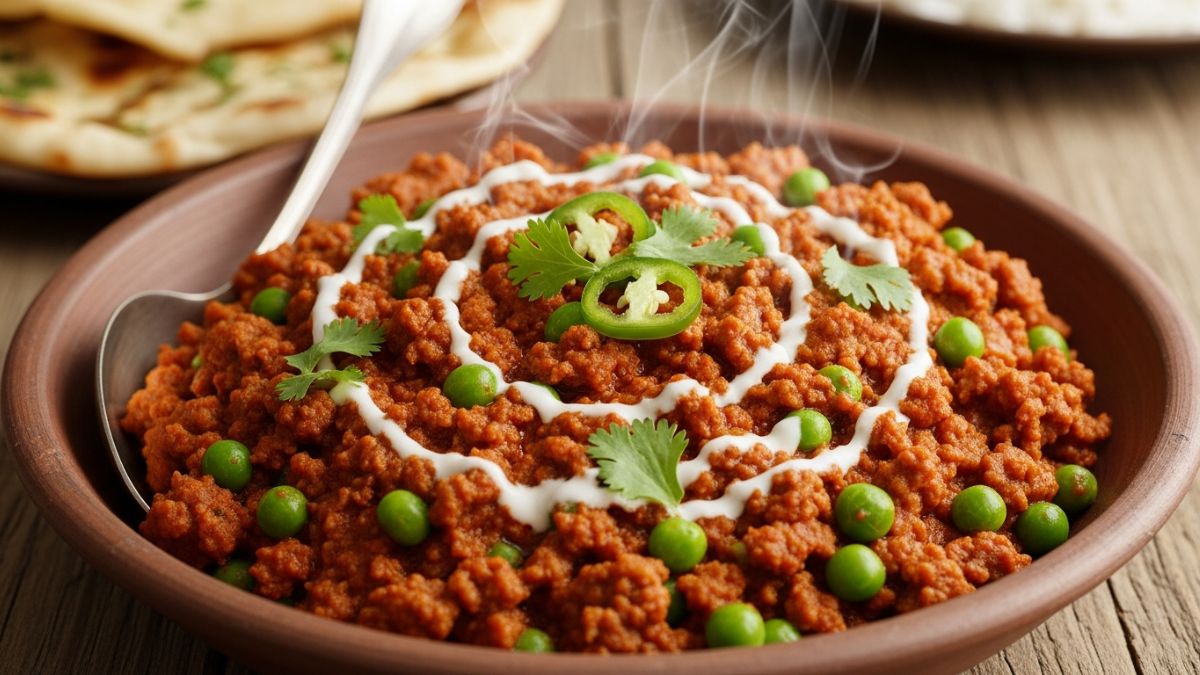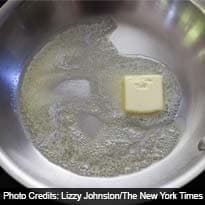When I'm with a chef, I always ask for the secret to good cooking. Once we get past the long speeches about the importance of passion, I usually hear a version of what Adam Evans, the chef at the Optimist in Atlanta, told me recently. "Cooking is thermodynamics," he said. "It's all about transferring heat. If you can transfer heat, you can cook."Easier said than done, chef. Heat burns things. A fast boil can kill a sauce and drive a vegetable to a limp death. Get too timid, and hamburger goes gray and sauces never thicken. That makes dinner late and lousy. There are deep, scientific reasons behind the magic that happens when heat is applied properly. It transforms the flavor and textures of beans and vegetables. It toasts and roasts and caramelizes sugars into dark and nutty deliciousness.People spend lifetimes trying to master heat in the kitchen. But for most of us, simply trying to get good food on the table is enough. To that end, having a strong game with a frying pan is a good way to improve your cooking. Sautéing, searing and pan-frying (searing's cooler, slower sister) are the most common forms of mastering heat in the kitchen. Learn them, and a world of recipes is open to you. In all three, the idea is to cook food using relatively high heat with a little fat. Searing crisps fish skin and gives a pork chop and other animal proteins a deep layer of flavor in a short amount of time. Pan-frying relies on a little more fat and lower heat to brown food that may need a longer cooking time. Sautéing, a term taken from the French word for jump, is essentially tossing food in a very hot pan. Done right, vegetables get a tinge of color and stay slightly crisp, and meats get brown but stay moist.
Which fat is a matter of taste and opinion. Butter, because it has milk solids, will burn if it spends too much time in a hot pan. Olive oil is good, but fragrant and expensive extra-virgin olive oils will lose some character over high heat. Coconut oil is remarkably stable, healthy and adds a little character. Some cooks swear by grapeseed oil, which can take extremely high temperatures. Others like canola for cost and convenience, but some think it has a slightly odd texture and don't like the chemical processes that are used with some brands.The fundamentals of heat, oil and a pan are simple. Get a pan big enough to hold all the food you are cooking. Especially with a sauté, you want to be able to move the food around easily so it doesn't just steam. Heat the empty pan first, usually for about a minute. Then add the fat. Let it heat before you add the food. Medium-high is a standard sauté and sear temperature, but this can vary depending on the recipe.Oil is hot enough when it begins to shimmer. That means you can start to see little waves, like the kind one may see hovering over a parking lot on a blasting-hot day. For some recipes, like seared scallops or certain fish, you even want to see just a hint of smoke waft up.
With a sear, patience is key. Put your meat or fish in the pan, then wait. Over a high temperature, it will start to brown and then release itself. Sometimes, nudging it with the edge of spatula will help it unstick from the pan. So will a bit of butter added toward the end of the cooking. Ease it under the edge of the fish or meat. The moisture helps the protein lose its grip on the pan.With a sauté, you move things around quickly over a slightly lower heat than you use for searing. The idea is to cook food briskly and evenly, so cutting it into uniform pieces helps.
Pan-frying takes more oil than sautéing and less heat than searing. Move the food a bit when it first goes in the pan to avoid sticking, then let it cook undisturbed on one side until it's time to flip it. Whichever method you use, always keep an eye on the heat. Often, inattention rather than a lack of skill is the biggest enemy in the kitchen.RECIPE:
Seared Scallops With Hot Sauce Beurre BlancTime: 30 minutes
Yield: 4 servings
For the Salsa:
1 large shallot, finely chopped
1/4 cup finely chopped fennel fronds
1 cup chopped cherry tomatoes
1 tablespoon extra-virgin olive oil
1 teaspoon red wine vinegar
For the Scallops:
1 pound large dry-processed sea scallops (about 12)
Kosher salt and black pepper
2 tablespoons grapeseed or canola oil
2 tablespoons white wine
Juice of one large lemon
1/4 cup Crystal hot sauce (Frank's or Texas Pete's can be substituted; do not use Tabasco)
2 sticks (1/2 pound) chilled butter, cut into cubes1. Make the salsa: mix shallot, fennel fronds, cherry tomatoes, olive oil and vinegar in a small bowl and set aside.2. Pat scallops dry on both sides with a paper towel; they must be extremely dry. Sprinkle one side with kosher salt and a small grind of black pepper.3. Heat oil in a good-quality, nonstick frying pan over medium-high heat. When oil is very hot and begins to shimmer and release a slight amount of smoke, place scallops in the pan in a single layer and reduce heat to medium. (Depending on the size of the pan, scallops may have to be cooked in two batches.) Let cook undisturbed for approximately two minutes or until bottoms begin to brown and caramelize. Flip scallops, cook for another minute and then remove to a warm plate.4. Turn heat back to medium-high and add wine, lemon juice and hot sauce, stirring to remove browned bits on the bottom of the pan. Reduce for a minute or two, then turn heat to low. Whisk in butter, a tablespoon at a time, until sauce becomes emulsified and glossy. Stir in any juices from the scallops, then remove from heat.5. To serve, spoon sauce onto four individual plates or a platter, place scallops on sauce and top each with a spoonful of salsa.© 2014 New York Times News Service
Which fat is a matter of taste and opinion. Butter, because it has milk solids, will burn if it spends too much time in a hot pan. Olive oil is good, but fragrant and expensive extra-virgin olive oils will lose some character over high heat. Coconut oil is remarkably stable, healthy and adds a little character. Some cooks swear by grapeseed oil, which can take extremely high temperatures. Others like canola for cost and convenience, but some think it has a slightly odd texture and don't like the chemical processes that are used with some brands.The fundamentals of heat, oil and a pan are simple. Get a pan big enough to hold all the food you are cooking. Especially with a sauté, you want to be able to move the food around easily so it doesn't just steam. Heat the empty pan first, usually for about a minute. Then add the fat. Let it heat before you add the food. Medium-high is a standard sauté and sear temperature, but this can vary depending on the recipe.Oil is hot enough when it begins to shimmer. That means you can start to see little waves, like the kind one may see hovering over a parking lot on a blasting-hot day. For some recipes, like seared scallops or certain fish, you even want to see just a hint of smoke waft up.
With a sear, patience is key. Put your meat or fish in the pan, then wait. Over a high temperature, it will start to brown and then release itself. Sometimes, nudging it with the edge of spatula will help it unstick from the pan. So will a bit of butter added toward the end of the cooking. Ease it under the edge of the fish or meat. The moisture helps the protein lose its grip on the pan.With a sauté, you move things around quickly over a slightly lower heat than you use for searing. The idea is to cook food briskly and evenly, so cutting it into uniform pieces helps.
Pan-frying takes more oil than sautéing and less heat than searing. Move the food a bit when it first goes in the pan to avoid sticking, then let it cook undisturbed on one side until it's time to flip it. Whichever method you use, always keep an eye on the heat. Often, inattention rather than a lack of skill is the biggest enemy in the kitchen.RECIPE:
Seared Scallops With Hot Sauce Beurre BlancTime: 30 minutes
Yield: 4 servings
For the Salsa:
1 large shallot, finely chopped
1/4 cup finely chopped fennel fronds
1 cup chopped cherry tomatoes
1 tablespoon extra-virgin olive oil
1 teaspoon red wine vinegar
For the Scallops:
1 pound large dry-processed sea scallops (about 12)
Kosher salt and black pepper
2 tablespoons grapeseed or canola oil
2 tablespoons white wine
Juice of one large lemon
1/4 cup Crystal hot sauce (Frank's or Texas Pete's can be substituted; do not use Tabasco)
2 sticks (1/2 pound) chilled butter, cut into cubes1. Make the salsa: mix shallot, fennel fronds, cherry tomatoes, olive oil and vinegar in a small bowl and set aside.2. Pat scallops dry on both sides with a paper towel; they must be extremely dry. Sprinkle one side with kosher salt and a small grind of black pepper.3. Heat oil in a good-quality, nonstick frying pan over medium-high heat. When oil is very hot and begins to shimmer and release a slight amount of smoke, place scallops in the pan in a single layer and reduce heat to medium. (Depending on the size of the pan, scallops may have to be cooked in two batches.) Let cook undisturbed for approximately two minutes or until bottoms begin to brown and caramelize. Flip scallops, cook for another minute and then remove to a warm plate.4. Turn heat back to medium-high and add wine, lemon juice and hot sauce, stirring to remove browned bits on the bottom of the pan. Reduce for a minute or two, then turn heat to low. Whisk in butter, a tablespoon at a time, until sauce becomes emulsified and glossy. Stir in any juices from the scallops, then remove from heat.5. To serve, spoon sauce onto four individual plates or a platter, place scallops on sauce and top each with a spoonful of salsa.© 2014 New York Times News Service
Advertisement







